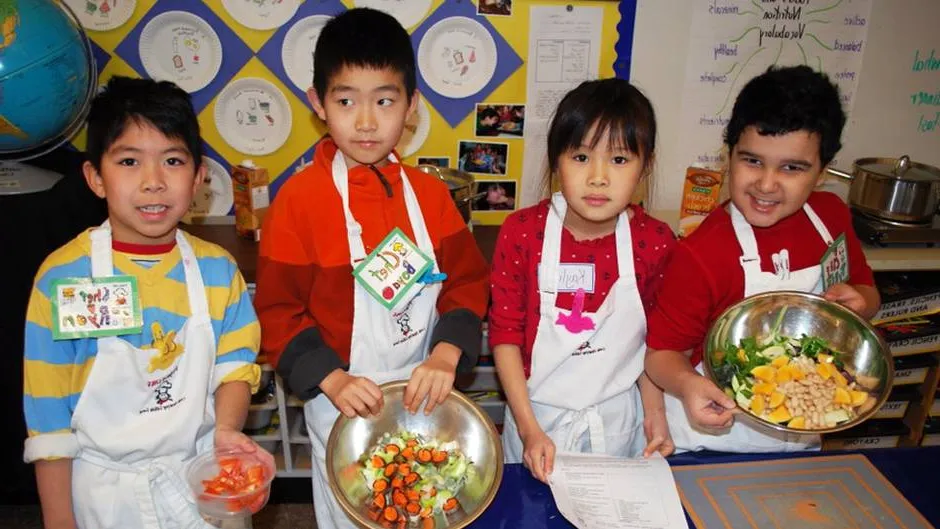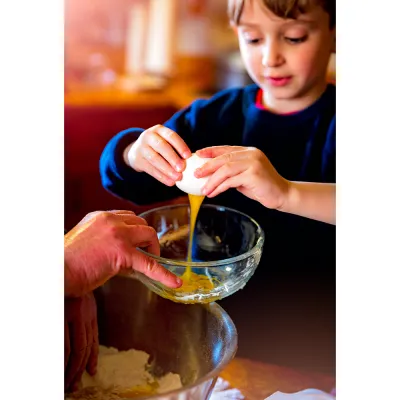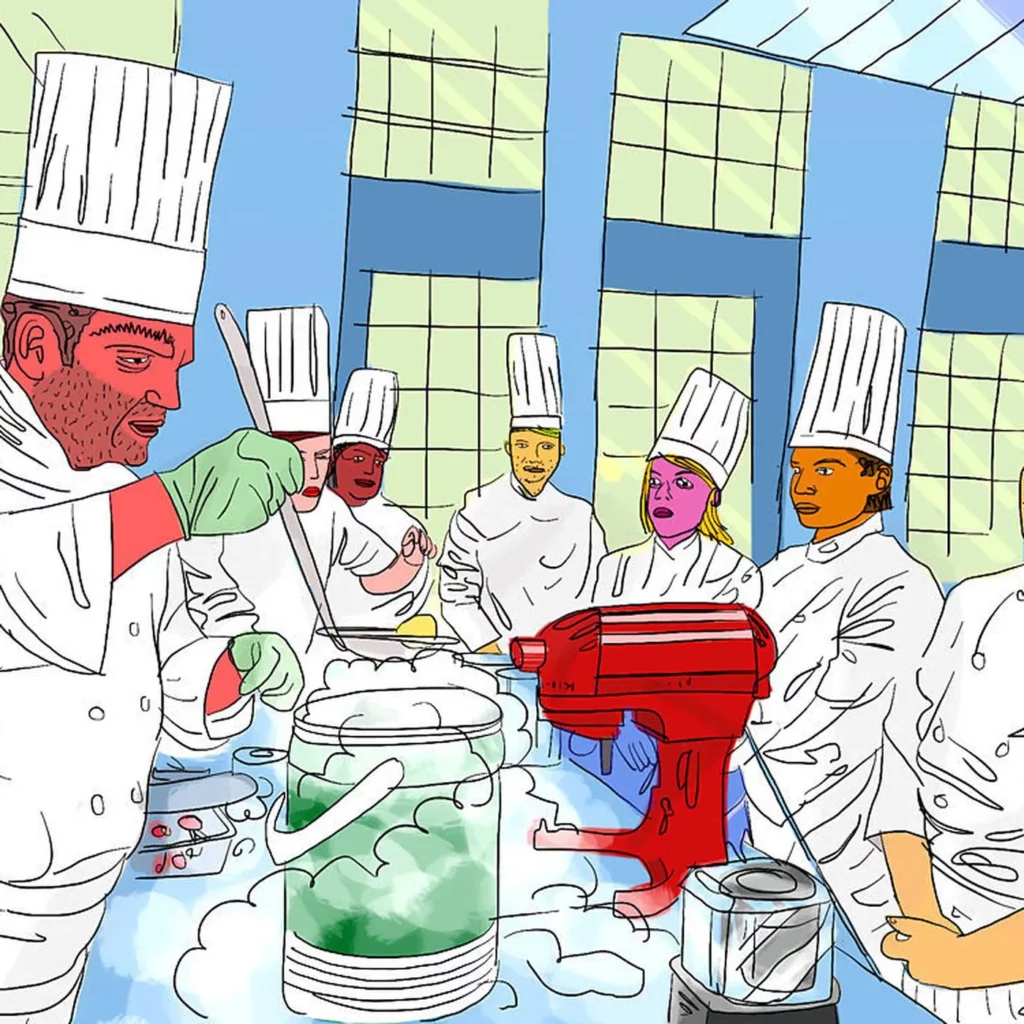“Why should cooking be taught in schools?” This question has sparked a culinary revolution in the realm of education.
As we delve into the reasons, we’ll explore how the art of cookery, once confined to the home kitchen, has found its way into the curriculum of schools, colleges, and universities. The need for students to be educated in the preparation of meals, from simple dishes to complex cuisines, has never been more apparent.
Cooking, a skill that was traditionally learned at home, is now being taught by trained teachers who are passionate about food and cooking. These culinary educators teach students not just how to cook, but also the science behind the food we eat, the cultural significance of different dishes, and the importance of nutrition.
The role of a chef is no longer limited to restaurants and hotels; it has become an integral part of our educational system.
This article will explore why cooking must be included in school curriculums, how it can benefit students, and what they could potentially gain from being trained in the kitchen.
From learning to cook simple foods to mastering intricate recipes, the journey of a student in a culinary class is as educational as it is delicious.
Why Should Cooking be Taught in Schools?
Cooking classes in schools offer students essential life skills, promote healthy eating, and foster creativity. Students learn nutrition, balanced meals, and culinary skills. These classes also develop cultural awareness, problem-solving abilities, and teamwork. They provide hands-on learning, integrating subjects like math and science. Inclusion of cooking classes equips students with practical skills, instills a love for cooking, and emphasizes healthy eating habits.
All of these have been proven by research.
Anyways, let’s get deep into each of these benefits.

Improved Health and Nutrition
One of the most significant benefits of teaching cooking in schools is the promotion of improved health and nutrition among students. By learning how to cook, kids gain valuable knowledge about healthy ingredients, portion control, and balanced meals.
This understanding can lead to better eating habits, which in turn can help prevent obesity and other health problems that are often associated with poor dietary choices.
Incorporating cooking classes into the school curriculum allows children to develop a hands-on relationship with food, enabling them to make informed decisions about what they eat.
As they learn to prepare nutritious meals, students become more aware of the importance of a healthy diet and are more likely to make better food choices throughout their lives.
Essential Life Skills
Beyond the obvious health benefits, teaching cooking in schools also equips students with essential life skills that will serve them well into adulthood.
Cooking is a practical skill that everyone should possess, and learning it at a young age can foster independence and self-sufficiency. As children learn to follow directions, manage their time, and solve problems in the kitchen, they are also developing valuable skills that can be applied to other areas of their lives.
Moreover, cooking can be a creative outlet for students, allowing them to express themselves through the art of food preparation.
This creative aspect of cooking can engage children who may not excel in traditional academic subjects, providing them with a sense of accomplishment and boosting their self-esteem.

Cultural Awareness
One of the many benefits of teaching cooking classes in schools is the opportunity for children to develop cultural awareness.
By exposing students to different types of cuisine, they can learn about the diverse culinary traditions that exist around the world.
This not only promotes understanding and appreciation among classmates but also offers cross-curricular learning opportunities. For example, when kids learn how to cook ethnic dishes, they can also explore the history, geography, and cultural practices associated with those cuisines.
This holistic approach to teaching cooking in schools helps students develop a broader perspective on the world and fosters a sense of global citizenship.
Cost Savings and Environmental Impact
Incorporating cooking classes into the school curriculum can also have a positive impact on the environment and help families save money. When children learn how to cook at home, they are more likely to choose homemade meals over pre-packaged or fast food options.
This not only leads to cost savings for families but also reduces packaging waste and the carbon footprint associated with food production and transportation.
Furthermore, teaching students about the benefits of using fresh, locally sourced ingredients can encourage them to support local farmers and contribute to a more sustainable food system.
By instilling these values in kids at a young age, schools can play a crucial role in shaping the next generation of environmentally conscious consumers.
Career Opportunities
The culinary arts industry is continually growing, and teaching cooking in schools can open up a world of career opportunities for students.
By providing kids with hands-on experience in the kitchen, they can explore their passion for cooking and potentially pursue a career in restaurants, hotels, catering companies, and more.
These classes can inspire future chefs and equip them with the skills they need to succeed in the competitive culinary world.
Moreover, learning about the various aspects of the food industry can help students make informed decisions about their career paths and understand the diverse range of job opportunities available to them.
In this way, cooking classes in schools can serve as a valuable stepping stone for students interested in pursuing a career in the culinary arts.

Addressing Food Insecurity and Cross-Curricular Learning
Teaching cooking in schools can play a significant role in addressing food insecurity and promoting cross-curricular learning. By providing students with practical skills for preparing nutritious meals on a budget, schools can empower kids to make healthier choices and ensure they have access to wholesome food.
Cooking classes can also serve as a platform for integrating various subjects, such as science, math, and cultural studies, into the curriculum.
For instance, students can learn about the chemistry behind cooking processes, practice measurement skills in math, and explore the cultural context of different dishes.
This comprehensive approach to teaching cooking not only equips children with essential life skills but also enhances their overall learning experience.
Case Studies: Successful Implementation of Cooking Classes in Schools
In the realm of culinary education, several schools have successfully integrated cooking classes into their curriculum, demonstrating why cooking should be taught in schools.
For instance, a university in the Midwest introduced a culinary arts program that not only teaches students how to cook a variety of dishes but also delves into the science of food and nutrition.
The students, trained by professional chefs, have learned to create meals that are both nutritious and delicious. The program has been so successful that it has been expanded to include a catering service run by the students, providing them with real-world experience in the culinary industry.
Another example can be found in a public school district in California, where cooking classes have been introduced as part of the lunch program. Students are taught to cook simple, healthy meals using fresh ingredients sourced from local farms.
The program has not only improved the quality of school meals but also educated students about the importance of nutrition and sustainable farming practices.
These case studies underscore the potential benefits of teaching cooking in schools and provide a blueprint for other educational institutions considering similar programs.
Challenges and Barriers to Implementing Cooking Classes in Schools
Despite the clear benefits, there are several challenges that schools might face when implementing cooking classes.
Budget Constraints
Budget constraints are a significant barrier, as purchasing cooking equipment and ingredients can be costly. Schools may need to seek additional funding or partnerships with local businesses to offset these costs.
Lack of appropriate facilities is another hurdle.
Not all schools have access to a kitchen suitable for teaching, and retrofitting existing spaces can be expensive. Innovative solutions, such as mobile cooking carts or partnerships with local restaurants, could be explored to overcome this challenge.
Resistance from stakeholders is another potential obstacle.
Some teachers and parents might question the relevance of cooking classes in the curriculum, arguing that academic subjects should take precedence.
To address this, schools need to clearly communicate the educational benefits of cooking classes, from developing practical life skills to enhancing learning in subjects like math and science.
Expert Opinions on the Importance of Cooking Classes in Schools
Many experts in the field of education and nutrition advocate for the inclusion of cooking classes in schools. Renowned chef and food activist Jamie Oliver has long championed for cooking to be taught in schools, stating, “Teaching kids how to cook is as important as teaching them to read and write.”
Similarly, Dr. Julia A. Wolfson, a researcher at the Johns Hopkins Bloomberg School of Public Health, found in her studies that “people who cook at home tend to eat a healthier diet.” She suggests that teaching cooking in schools could be a powerful tool in combating poor dietary habits and related health issues.
Educators also see the value in teaching cooking. As one high school culinary arts teacher put it, “When students learn to cook, they’re not just learning a practical skill. They’re also learning about different cultures, history, science, math, and even language arts. Cooking is a cross-curricular goldmine.”
These expert opinions underscore the importance and relevance of cooking classes in schools, highlighting the many ways in which they can enrich students’ education and overall well-being.
Conclusion: Why Cooking Should Be Taught in Schools
In conclusion, there are numerous benefits to teaching cooking in schools, ranging from improved health and nutrition to the development of essential life skills.
By incorporating cooking classes into the curriculum, schools can foster cultural awareness, promote environmental sustainability, and open up a world of career opportunities for students.
Furthermore, these classes can help address food insecurity and provide a platform for cross-curricular learning. The impact of teaching cooking in schools extends beyond the classroom, shaping the lives of individuals and society as a whole.
By investing in culinary education, we can equip the next generation with the skills and knowledge they need to lead healthy, fulfilling lives and contribute positively to the world around them.



